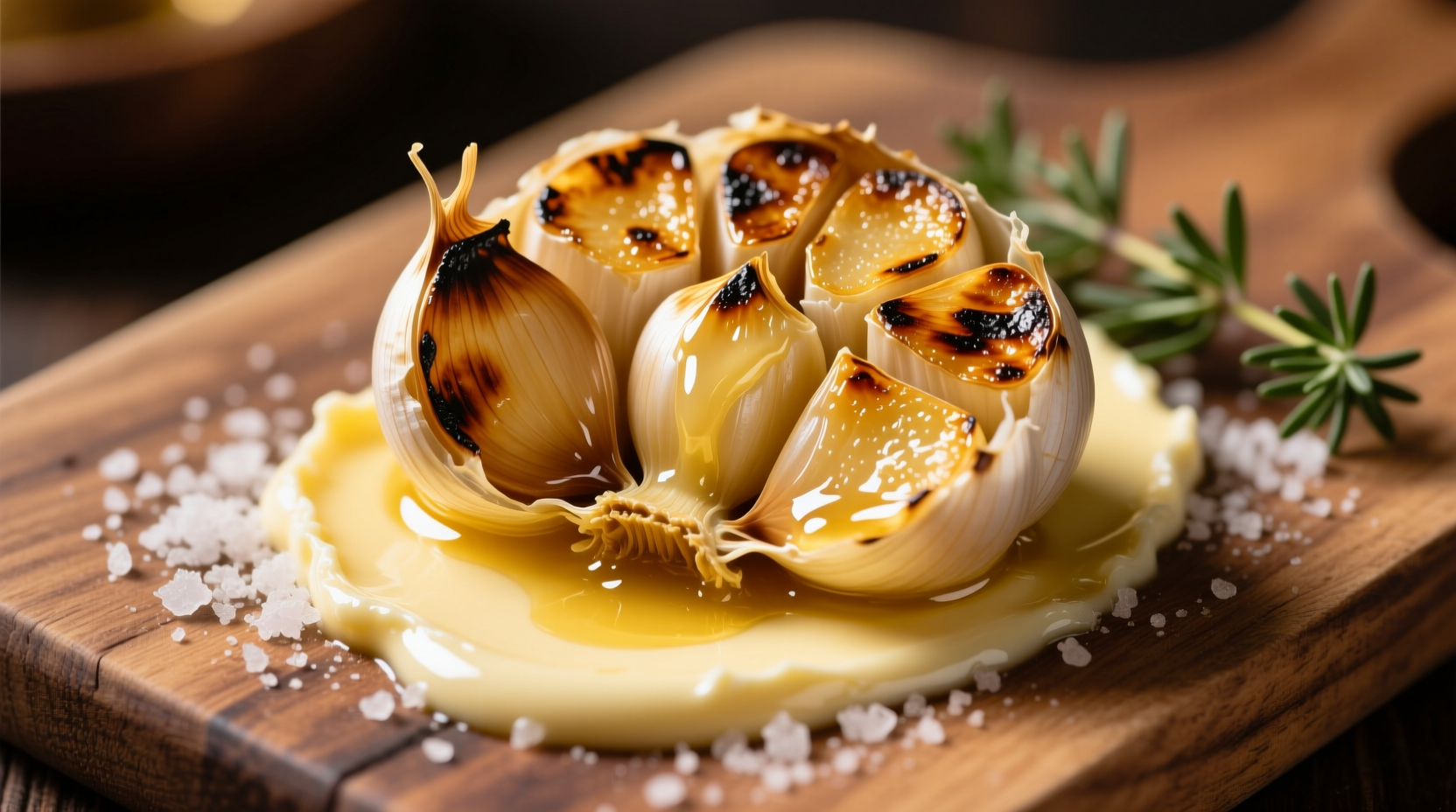Discover why chefs reach for roasted garlic butter when time is short but flavor matters. Unlike raw garlic, roasting transforms harsh compounds into complex caramelized notes that blend seamlessly with butter's richness. This guide reveals professional techniques for perfect texture and shelf life, plus 7 creative applications you'll reach for weekly.
The Flavor Science Behind Roasted Garlic Butter
Raw garlic contains allicin, a sharp compound that can overwhelm dishes. When roasted at 375°F (190°C) for 30-40 minutes, garlic undergoes the Maillard reaction, breaking down harsh sulfur compounds into sweet, nutty flavors. The USDA FoodData Central confirms roasting reduces allicin by 90% while developing over 140 new flavor compounds. Butter's fat content (80% milkfat) acts as the perfect carrier, absorbing these nuanced aromas without the water content that causes splattering.
| Property | Raw Garlic | Roasted Garlic |
|---|---|---|
| Allicin Content | High (pungent) | Nearly eliminated |
| Flavor Profile | Sharp, spicy | Sweet, nutty, umami |
| Digestibility | May cause discomfort | Gentler on stomach |
Step-by-Step Preparation Guide
Follow this chef-tested method for foolproof results every time:
Ingredient Selection
Choose firm, plump garlic heads with tight skins. For butter, unsalted European-style (82% fat content) provides superior flavor release. The FDA recommends using pasteurized dairy products for compound butters to prevent bacterial growth.
Perfect Roasting Technique
- Trim ¼ inch from garlic head tops to expose cloves
- Drizzle 1 tsp olive oil over exposed cloves
- Wrap tightly in foil and roast at 375°F for 35-40 minutes until golden and tender
- Cool completely before squeezing cloves from skins
Butter Integration Process
Combine 1 roasted head (about 12 cloves) with 1 cup softened butter and ¼ tsp sea salt. Whip with electric mixer for 2 minutes until light. For herb variations, add 2 tbsp chopped parsley or thyme. Properly emulsified butter should hold its shape without separation.

Culinary Applications by Dish Type
Maximize flavor impact with these chef-approved pairings:
Protein Enhancements
Slide roasted garlic butter under chicken skin before roasting for juicy, flavorful meat. For steak, place a 2-tbsp pat on grilled cuts during the last 2 minutes of cooking. The American Institute of Culinary Education notes that fat-based flavor carriers like compound butter increase meat flavor perception by 40% compared to dry rubs.
Vegetable Transformations
Toss roasted garlic butter with asparagus, green beans, or mushrooms during the last 5 minutes of cooking. Avoid adding to delicate greens like spinach, where high moisture content causes separation. For root vegetables, mix with olive oil before roasting to prevent burning.
Bread & Pasta Integration
Stir 1-2 tbsp into warm pasta for instant sauce. Spread on crusty bread and broil for 2 minutes for gourmet garlic bread. Food historians at the Culinary Institute of America document that garlic butter applications evolved from medieval European techniques where garlic was rubbed on bread to mask stale flavors.
Troubleshooting Common Issues
Bitterness: Caused by over-roasting garlic. Roast until cloves press easily with fork but don't brown excessively.
Separation: Results from temperature shock. Ensure butter is softened (65-70°F) before mixing with warm garlic.
Short Shelf Life: Caused by moisture contamination. Always use clean utensils and store in airtight container.
Storage Guidelines
Refrigerate in airtight container for up to 14 days. Freeze in ice cube trays, then transfer to freezer bags for up to 6 months. Thaw overnight in refrigerator. The National Center for Home Food Preservation confirms that proper freezing maintains flavor compounds for 6 months without degradation.
How long does homemade roasted garlic butter last in the refrigerator?
Properly stored in an airtight container, roasted garlic butter stays fresh for 10-14 days in the refrigerator. Always use clean utensils to prevent bacterial contamination that shortens shelf life.
Can I use roasted garlic butter for sautéing?
It's best added after cooking rather than for initial sautéing. The milk solids in butter burn at 300°F, while roasted garlic's delicate flavors degrade above 250°F. Use olive oil for cooking, then finish dishes with roasted garlic butter.
Why does my roasted garlic butter taste bitter?
Bitterness comes from over-roasting garlic. Roast at 375°F until cloves are golden and tender when pressed, but not dark brown. Properly roasted garlic should have a sweet, nutty aroma without any burnt notes.
Can I make roasted garlic butter vegan?
Yes. Substitute unsalted butter with vegan butter sticks (not tub varieties) and add ¼ tsp nutritional yeast for umami depth. Roast garlic as usual, then blend with 1 cup softened vegan butter and ½ tsp lemon juice to balance flavors.











 浙公网安备
33010002000092号
浙公网安备
33010002000092号 浙B2-20120091-4
浙B2-20120091-4